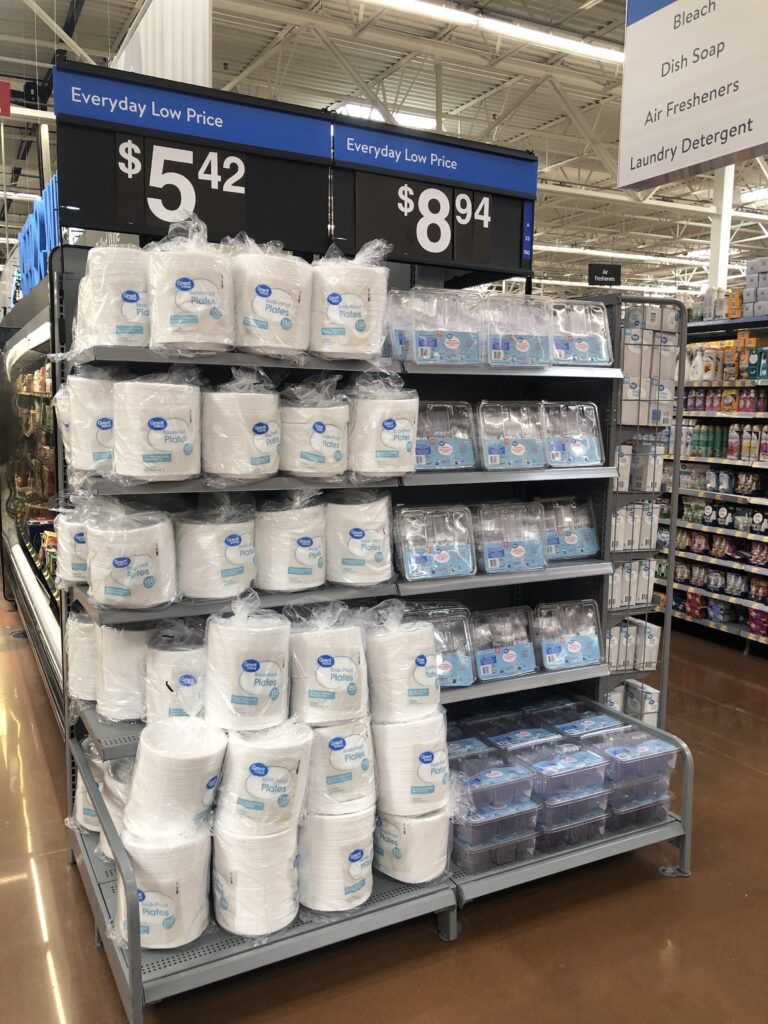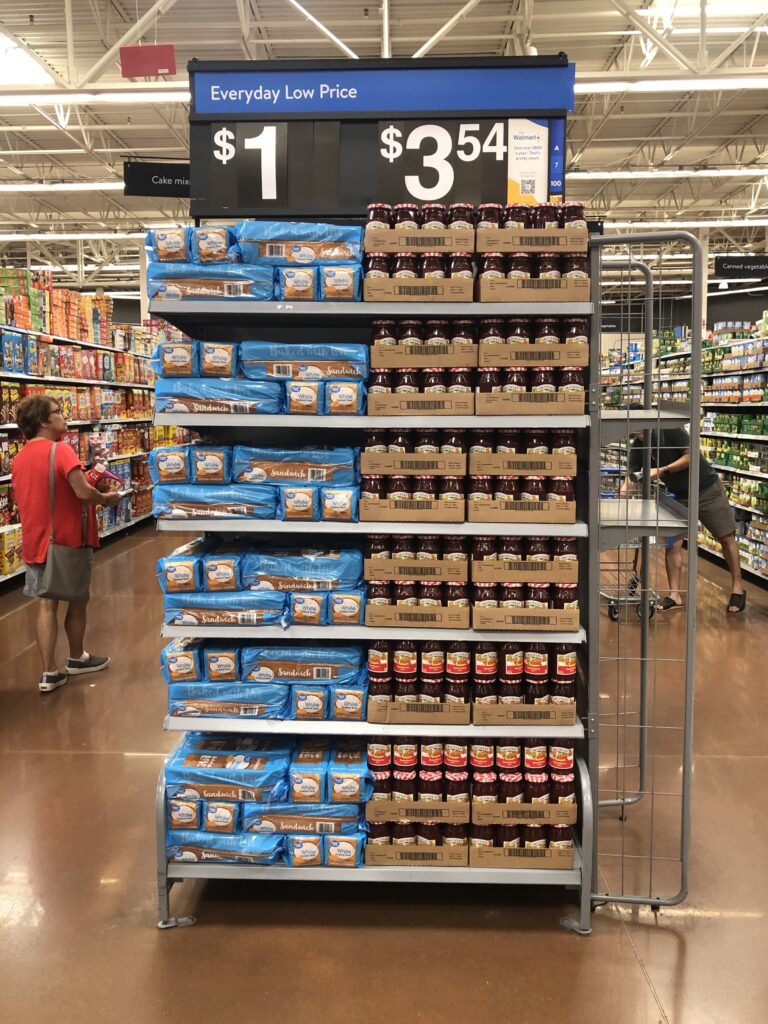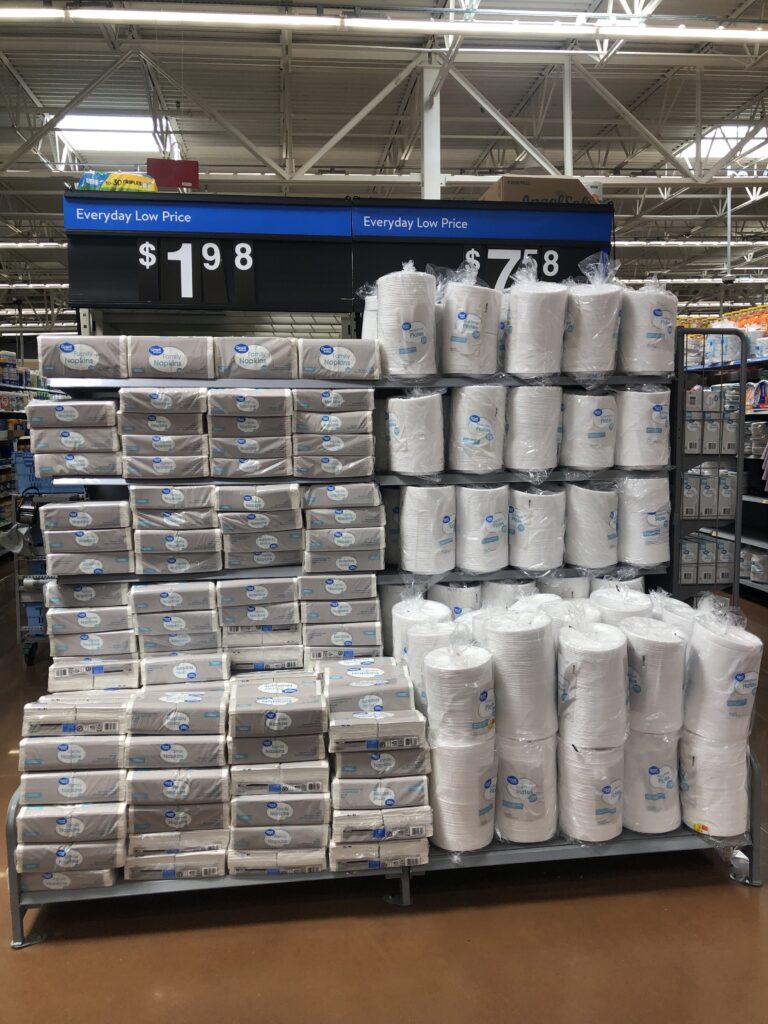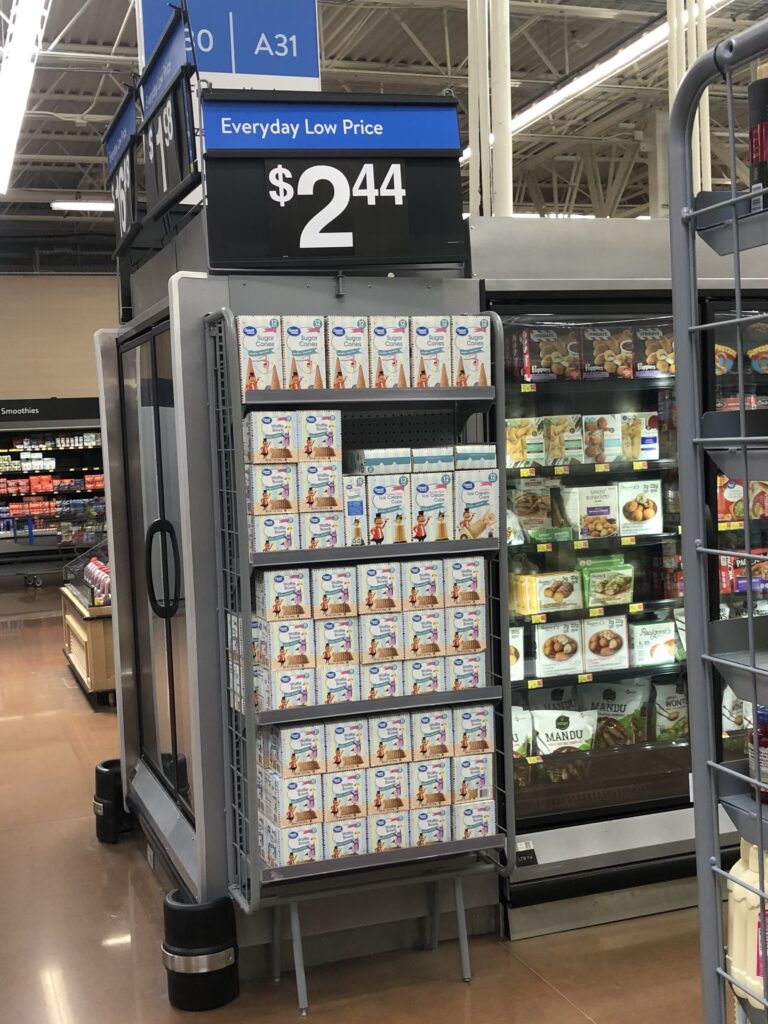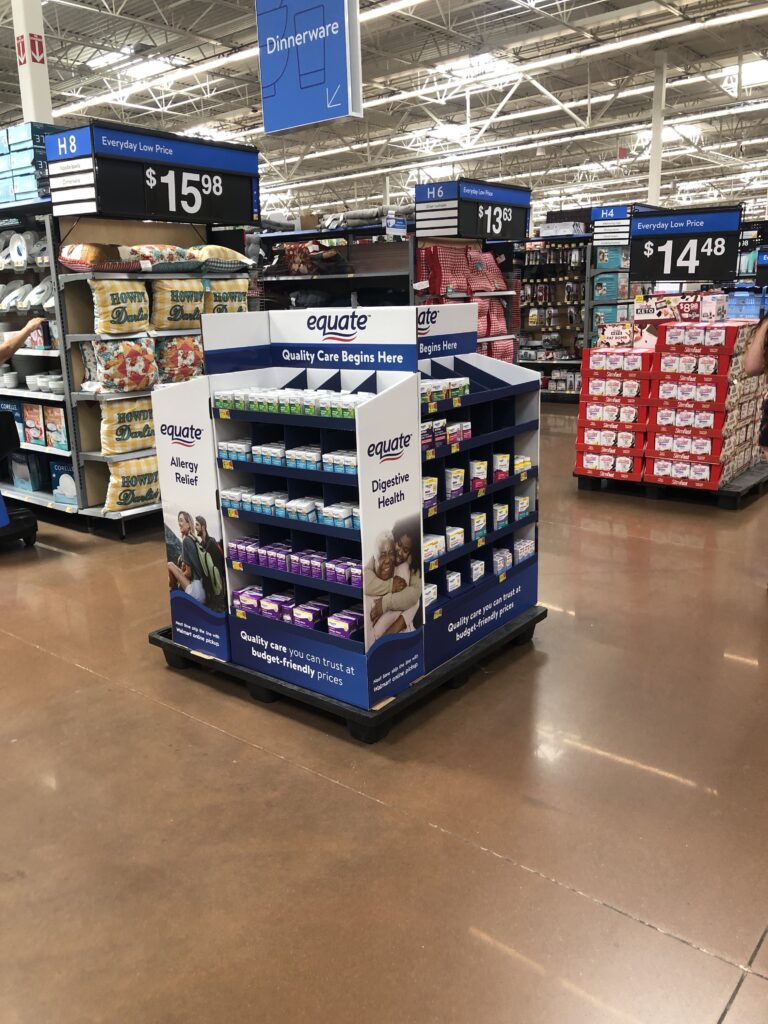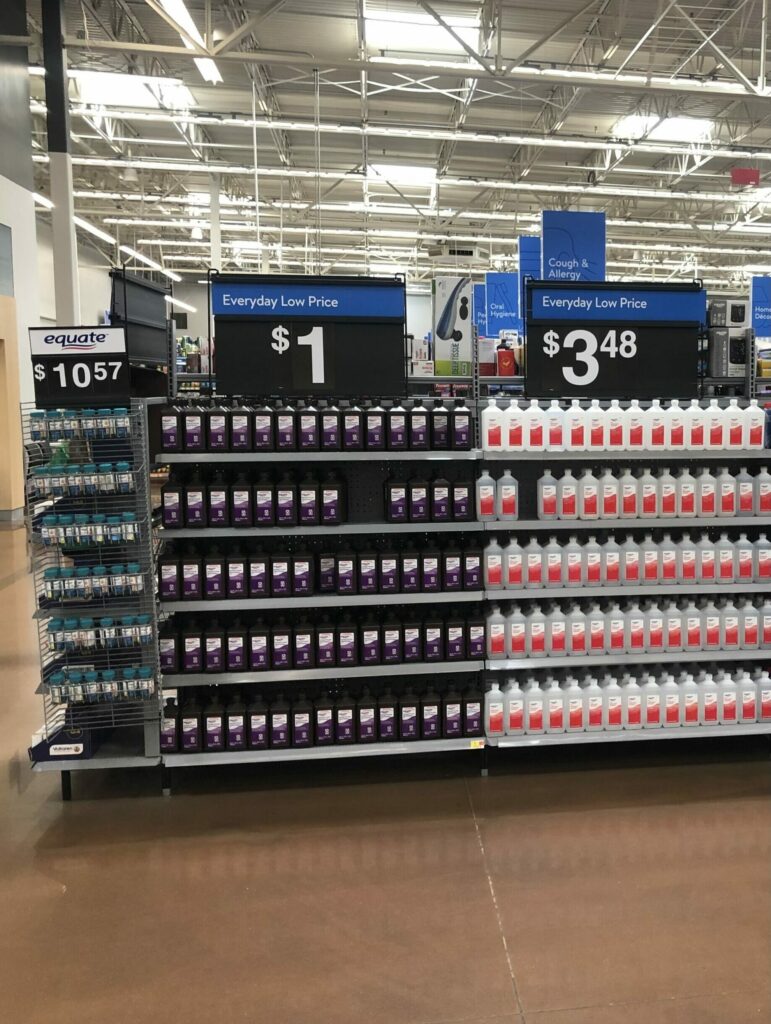As inflation ticks up, Harvest Group continues to study consumer behavior closely, and we have seen shifts occur at different times by category.
Initially, more price-sensitive categories were quickly impacted. The shopper understandably opted for more value-based items. There was a belief that certain categories would remain resilient.
We believe this to still be the case but, as time has ticked on and inflation has continued to increase, we are seeing a much broader consumer shift. As the consumer is pinched, price has moved in importance on the purchase decision tree.
In a recent interview with Talk Business & Politics, Charles Redfield, Chief Merchandising Officer at Walmart U.S., said private brands play an essential role in Walmart’s merchandising strategy. I recently did a quick walk in a local Walmart store that backs this strategy up.
As you see above, Walmart has a focused Private Label strategy in many categories, recognizing the shift as well.
How should a supplier respond to the shift in consumer behavior?
1. Study the analytics of your business. There has never been a more necessary time to be in the weeds of your business. It’s increasingly important to focus on granular item-level and store-level data. Here are a few areas to consider:
- Item $ sales versus unit sales (including pricing comparisons by region)
- Track inflation increase versus POS $’s and units – as inflation increases a point, how is this impacting POS?
- OPD % of sales trends. Is the consumer shifting to more in-store purchasing?
- Market trends – is your POS shifting across retailers?
- Are you growing as fast as your category? An increase in sales is only good if you are growing faster than the category.
2. Bring category insights to the merchant. Don’t report the news – understand the “why” behind your insights and present the data story. Focus less on weekly POS reporting and more on data-driven insights that will help drive the category.
3. Optimize inventory. Help improve retailer ROI by optimizing what you have in the store. Get granular studying inventory. Look at inventory versus forecast by store to maximize run rates and minimize potential markdowns. Balance inventory between high volume and low volume stores.
4. Question if there needs to be a shift in your business. Price points, pack sizes, alternate items, and messaging should all be on the table as we head into a possible recession.
Harvest Group was Built to Assist Suppliers in These Situations
Harvest Group has been guiding our clients through these challenges and opportunities with great success. Here are a few areas we have invested in to support our clients:
- Technology. Harvest Group’s proprietary technology platform, Ember, efficiently analyzes data to deliver insights, answer the “why’s” of the business, so that we can adjust, capitalize on trends, and deliver growth. We see the consumer shifts as they happen.
- Team Structure. We provide functional experts for each of our clients with a low client to resource ratio. Translation: Our clients have a seasoned replenishment manager to optimize inventory, an experienced analytics manager that thinks like a category manager, and an account manager that is not loaded with clients, wearing your jersey.
- Digital Expertise. As the consumer continues to shift, we see it in the data via our in-house tools, i.e. Share of Search tool, react to the insights, and adjust content if needed. Additionally, we have the team to adjust the digital advertising strategy, serve ads, and continue to read and adjust.
- Strategic Process. We call this our Client Growth Model. We are focused on sustainable, long-term growth. Respond to the short-term insights, while staying focused on the long-term strategy.
Harvest Group has developed an efficient way of analyzing how the economy and inflation are impacting existing businesses. If you are interested in the analysis, let us know at hello@harvestgroup.com. Because of the detailed nature of the analysis, spots are limited.
